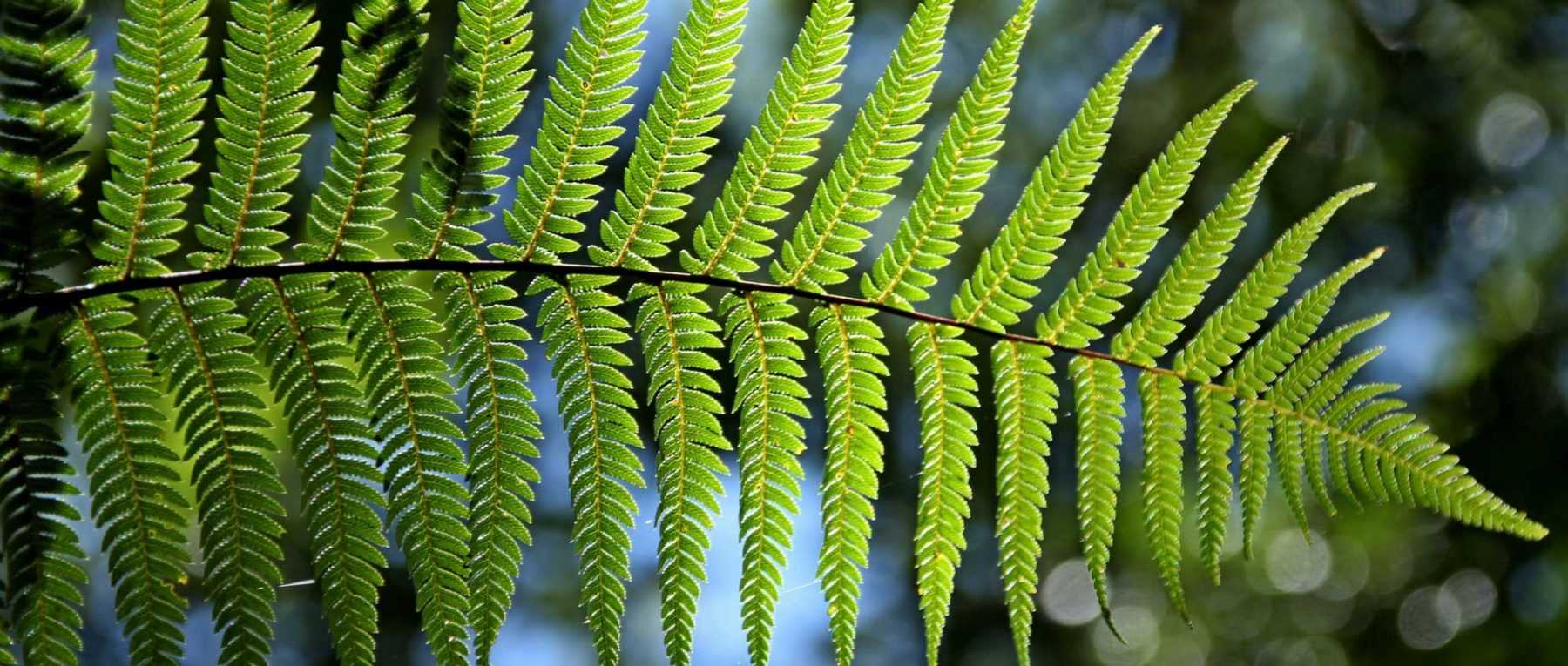
Ferns: Planting and Growing
Contents
Ferns in a nutshell
- Ferns are perfect for bringing natural beauty and graphic appeal to the garden
- They’re ideal for greening up shady garden corners where other plants struggle to grow
- Some varieties offer evergreen foliage, providing year-round decoration!
- While most are green, some ferns boast colourful fronds!
- Most ferns thrive in shade and rich, moist soil. But there are also varieties adapted to sun or drought conditions.
Our Expert's Word
Unique plants in the plant kingdom, ferns captivate with their exuberant foliage and graphic appeal. They bring freshness to the garden and come in a rich palette of greens. They possess that rare delicacy, that graphic yet utterly natural quality. They manage to spark interest even without flowers, thanks to the exceptional diversity of their foliage!
Fossil plants, relics from another era, they have endured through the ages to reach us today. Bringing with them a timeless quality to the garden. They surprise and captivate us with their authentic, natural character. They evoke memories of woodland walks.
In spring, their unfurling fronds create a true spectacle that inspires wonder and surprise. They spread their fronds to elegantly clothe the base of trees and shrubs. They provide an ideal solution for shady gardens, damp areas and those tricky, hard-to-reach corners of the garden. Some are evergreen and remain decorative even in midwinter! And if you thought them monochromatic, you’ll be surprised to discover species with colourful foliage!
Although most species are tropical (often grown as houseplants), there are also many hardy varieties for outdoor cultivation, like Dryopteris or Asplenium. These are low-maintenance plants that can even thrive in containers. Ferns demand shade and cool conditions. Most will thrive in fresh, rich, humus-rich and slightly acidic soil. But they’re so diverse that some adapt to very specific situations, allowing us to grow them even in dry, sunny or alkaline conditions. They can grow in rockeries, on walls, in woodland settings, and sometimes even on living walls!
Botany
Botanical data
- Latin name Asplenium, Dryopteris, Athyrium...
- Family Ferns
- Common name none
- Flowering Deciduous or evergreen foliage
- Height up to 2 metres
- Exposure shade or partial shade
- Soil type moist, humus-rich
- Hardiness often -15 to -20°C
True relics of the past, ferns were among the first plants to emerge from water. The oldest appeared nearly 400 million years ago… They were here long before dinosaurs! Although they’ve adapted and survived through the ages, they retain from this era a dependence on water, essential for their reproduction. This is why they’re naturally found mainly in cool or damp environments. Some are even entirely aquatic!
An extremely diverse plant group, ferns comprise between 9,000 and 13,000 species found on nearly all continents. Most originate from tropical zones, which explains why they’re often grown as houseplants. Here we’ll focus on hardy, frost-resistant ferns from temperate regions. Many species can be observed growing wild in France, easily found in forests, along streams or in marshy soils. Some grow directly in the ground, others in rock crevices, on walls, or even as epiphytes on trees!
Ferns form a large group encompassing plants from different families like Dryopteridaceae, Polypodiaceae or Woodsiaceae. Together with horsetails, they form an even larger group called Pteridophytes. Who would have thought that ferns with their large fronds are related to horsetails with their straight, robust, leafless stems?
Ferns have their own unique vocabulary: we don’t speak of leaves but of fronds, initially coiled in fiddleheads, and they don’t produce seeds but spores, clustered in sacs called sori!
Ferns can develop in upright clumps, sometimes forming small crowns, even proper trunks for tree fern species! As for groundcover ferns, they spread via creeping rhizomes. Fern height varies greatly. Asplenium species are among the shortest, while Dryopteris are much more imposing. Osmunda regalis is one of the largest hardy species – it can reach up to two metres tall!
Initially, fern fronds are coiled in fiddleheads at the clump’s centre. These then unfurl, revealing elegant fronds, sometimes very large. What a spectacle to see ferns unfurl their fronds in spring! Most often they’re a lovely tender green colour initially, darkening with time. Ferns offer a beautiful palette of greens in all shades – from bright yellow-green to deep dark green, sometimes tinged with purple.
Asian ferns offer the most varied colours. For example, Athyrium niponicum ‘Pictum’ has splendid silvery foliage tinged with purple. As for Dryopteris erythrosora, it bears superb fronds that change colour over time – first orange-pink when unfurling in spring, then bronze, finally dark green.
Ferns offer wonderful foliage diversity! Most often their fronds are long, slender and highly divided! This gives them their characteristic lightness, adding great graphic appeal to borders. That’s why we love them so… Few plants have such graceful, elegant foliage! Having no flowers, ferns seem to have bet everything on foliage – and succeeded brilliantly! Some species have much less divided fronds, like Onoclea sensibilis, and can even have entire blades, like the Hart’s Tongue Fern (Phyllitis scolopendrium)!


Fern fronds are initially coiled in fiddleheads before unfurling! From left to right, Dryopteris filix-mas, Dryopteris wallichiana and Matteuccia struthiopteris (photo Muriel Bendel)
Many species are evergreen! This includes Dryopteris erythrosora, Polystichum setiferum and Phyllitis scolopendrium. They remain decorative all year! Others are deciduous, like Athyrium, Adiantum or Osmunda. Their foliage dies back in autumn and new fronds unfurl in spring.


Fern fronds can take on superb colours! Top to bottom: Dryopteris erythrosora, Dryopteris cycadina and Athyrium niponicum var. pictum (photo Kristine Paulus)
Ferns have rhizomes – underground stems storing nutrients. These can be creeping, allowing the plant to spread. They’re easily propagated by dividing these rhizomes. Roots develop from the rhizomes, staying shallow without penetrating deeply.
Ferns’ peculiarity is that they produce neither flowers nor seeds. In their era, plants simply hadn’t yet invented flowers for reproduction! Instead, ferns have spores – very fine dust-like particles produced in enormous quantities. These are contained in sacs called sori, often grouped on frond undersides. When mature, they open to release spores carried by wind. Some ferns develop fertile fronds in summer, looking quite different from other fronds, whose role is bearing spores.
When spores fall to ground, they germinate into prothalli – tiny moss-like organisms bearing sex organs. After fertilisation, new ferns grow from these prothalli.
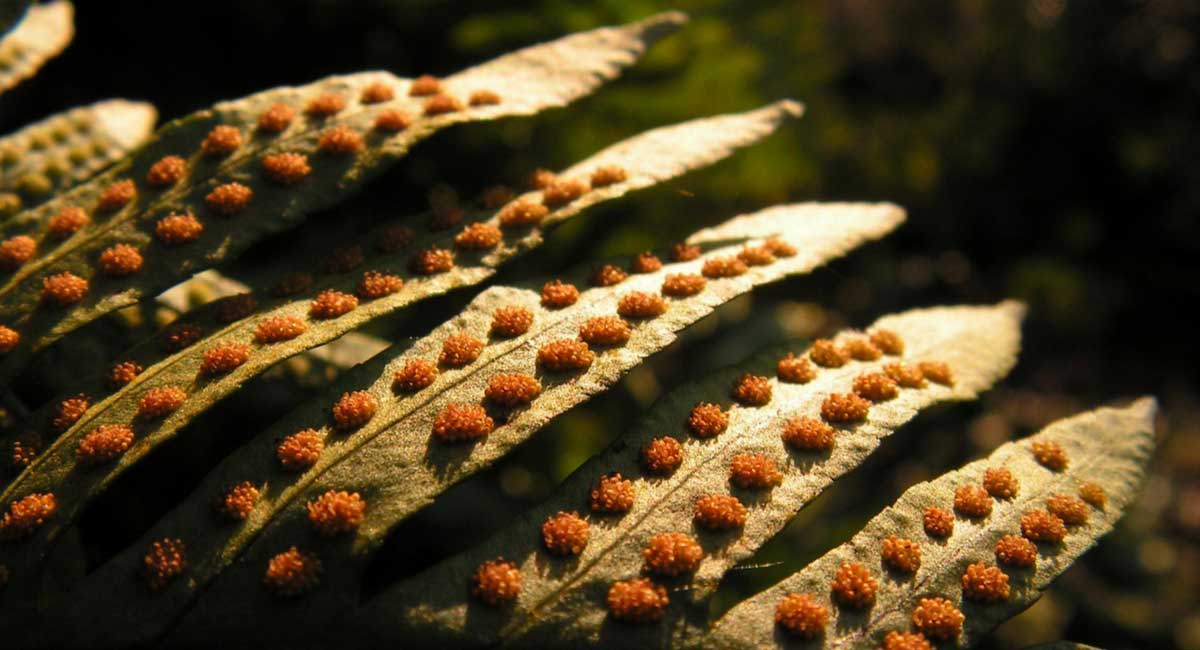

Fern sori are grouped on frond undersides. When mature, they open to release spores. Here, a Polypodium vulgare frond (photo Matthieu Gauvain)
Ferns are also useful plants. Some are edible! They’re helpful in gardens: fern liquid manure can be made or used as compost activator.
Read also
Planting Tree FernsMain fern species and varieties
Botanical species, as found in nature, are frequently used in gardens. But there are also some horticultural varieties with surprising fronds that take on crested forms.

Dryopteris erythrosora - Copper Fern
- Height at maturity 70 cm
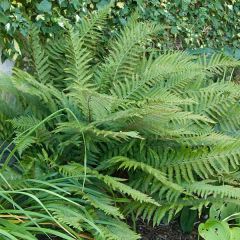
Polystichum polyblepharum - Japanese Lace Fern
- Height at maturity 60 cm
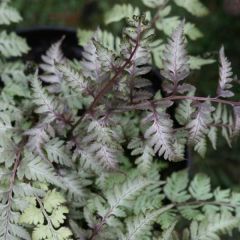
Athyrium niponicum var. pictum - Painted Fern
- Height at maturity 30 cm
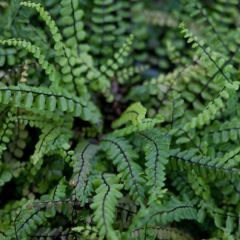
Asplenium trichomanes
- Height at maturity 15 cm
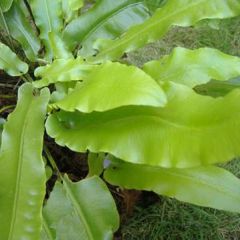
Phyllitis scolopendrium
- Height at maturity 45 cm
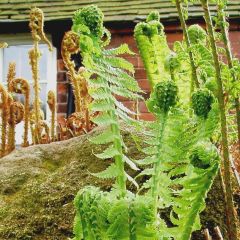
Matteuccia struthiopteris - Ostrich Fern
- Height at maturity 80 cm
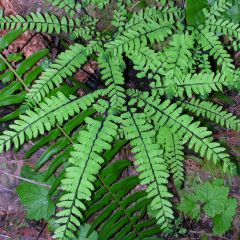
Adiantum pedatum
- Height at maturity 60 cm
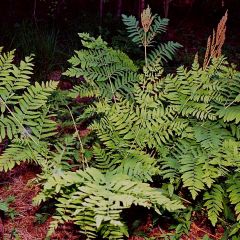
Osmunda regalis - Royal Fern
- Flowering time June to August
- Height at maturity 2 m
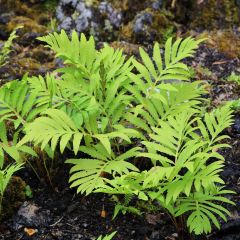
Onoclea sensibilis
- Height at maturity 60 cm
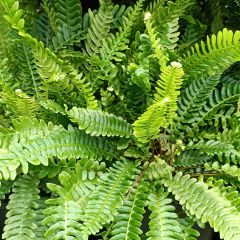
Blechnum spicant - Hard Fern
- Height at maturity 40 cm
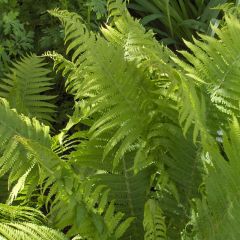
Dryopteris filix-mas - Male Fern
- Height at maturity 1 m

Dicksonia antarctica - Tree Fern
- Height at maturity 6 m
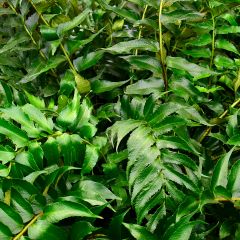
Cyrtomium falcatum
- Height at maturity 60 cm
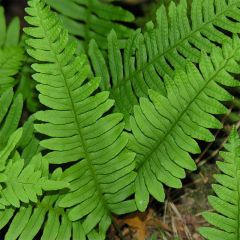
Polypodium vulgare - Rockcap Fern
- Height at maturity 25 cm
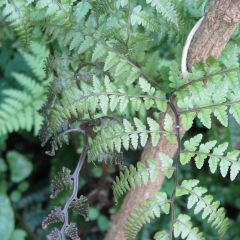
Athyrium otophorum var. okanum - Eared Lady Fern
- Height at maturity 40 cm
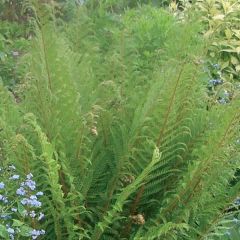
Dryopteris affinis - Scaly Male Fern
- Height at maturity 1,20 m
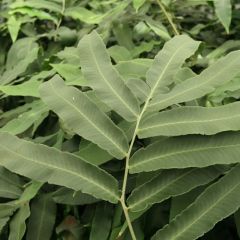
Dryopteris sieboldii - Japanese Fern
- Flowering time February
- Height at maturity 60 cm
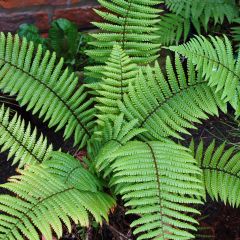
Dryopteris wallichiana - Wood Fern
- Height at maturity 1,50 m
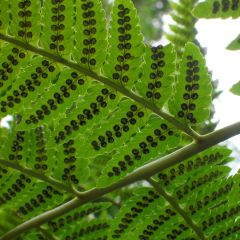
Dryopteris goldieana - Giant wood fern
- Height at maturity 1,50 m
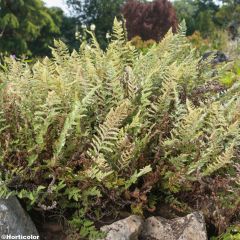
Cheilanthes lanosa
- Height at maturity 30 cm
To plant the right fern in the right place, discover our advice sheet: “Ferns: how to choose them”
Discover other Ferns
View all →Available in 2 sizes
Available in 1 sizes
Available in 2 sizes
Available in 2 sizes
Available in 2 sizes
Available in 2 sizes
Available in 1 sizes
Available in 2 sizes
Available in 1 sizes
Available in 1 sizes
Planting
Where to Plant?
Two conditions are essential for successful fern cultivation: coolness and shade! These are plants that grow naturally in woodland undergrowth: they will thrive at the base of trees or shrubs, or sheltered by walls, in the shade of a house. However, they still need light and prefer dappled shade to deep shade. They like cool, even moist soils. Osmunda, Matteuccia, and Athyrium will do well on pond banks. That said, once well-established, many species can thrive in dry shade. This is particularly true of the Male Fern. Ferns will appreciate being planted in a sheltered spot away from wind.
Growing naturally in forests, ferns love rich, light, humus-rich soils, and they will thrive in good woodland soil. To enrich your soil, you can add compost at planting time. If your soil is sandy, add organic matter to make it richer and less dry! If it is particularly heavy, you can also lighten it with leaf mould. Ferns do not need deep soil, as their root system is quite shallow.
Most species prefer slightly acidic soils and will struggle to grow in chalky ground. Feel free to add some ericaceous compost. However, aspleniums prefer chalky soils.
Some ferns, such as aspleniums and polypodies, thrive in rockeries or on walls. You could even consider planting them on dead tree stumps! Finally, some varieties, such as Asplenium scolopendrium or Athyrium niponicum ‘Pictum’, adapt well to living walls.
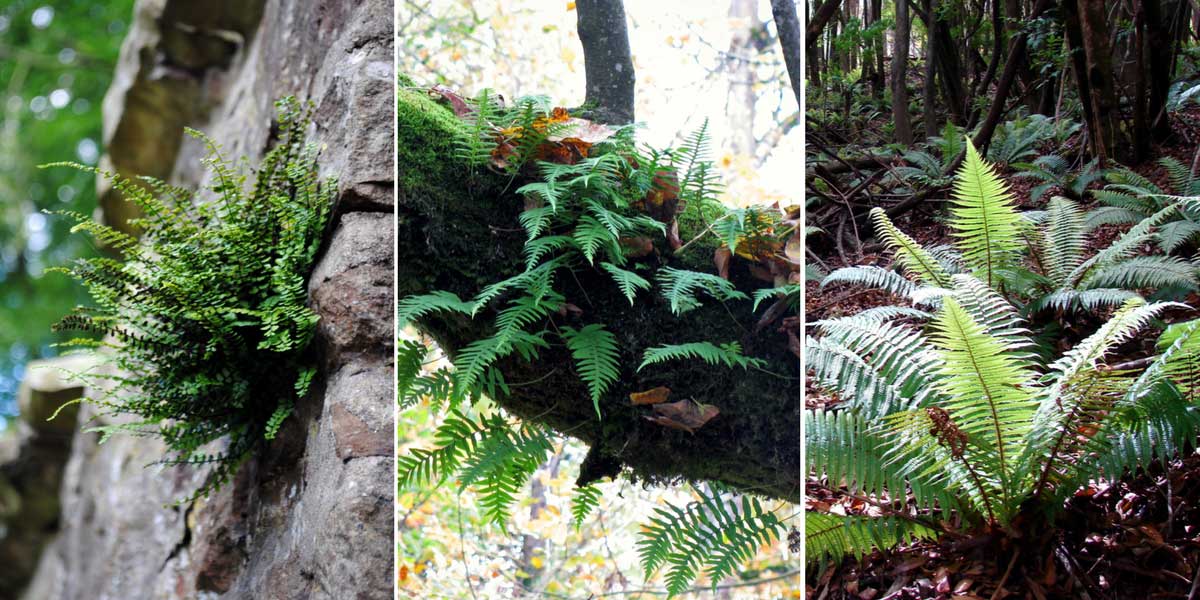

Although most ferns thrive in open ground and shade, there are exceptions! Here, an Asplenium trichomanes on a rocky wall, a polypody as an epiphyte on a tree trunk, and Dryopteris wallichiana in woodland
When to Plant?
Plant your ferns in autumn or spring, avoiding frost or extreme heat, so ideally plant between September and November or from March to April, even May.
How to Plant?
Planting in open ground:
Ferns appreciate rich, humus-rich, and light soils: don’t hesitate to add organic matter to improve your soil.
- Start by soaking the root ball in a bucket of water to moisten it.
- Meanwhile, dig a planting hole about twice the size of the root ball.
- Place leaf mould at the bottom, and possibly ericaceous compost if your soil is chalky.
- Position the fern, then backfill and gently firm the soil.
- Water generously.
- Mulch with pine bark or wood chips (BRF) to keep the soil cool.
Continue watering regularly in the weeks after planting, and during dry spells.
Container planting:
Choose a fairly large pot and place a layer of gravel or clay pebbles at the bottom. Fill the pot with substrate, ideally a mix of compost and ericaceous compost. Plant the fern, backfill around it, then water. Ferns dislike overly dry air, so don’t hesitate to mist the leaves regularly in summer.
To learn more about planting ferns, visit our practical guide: “Planting Ferns”
Read also
Planting fernsMaintenance
Ferns require very little maintenance! They are rarely affected by diseases or pests. You can plant them in a naturally wild area of your garden, or in a space that is difficult to maintain, and let them grow freely without intervention.
If you grow them in pots, water regularly to keep the compost moist. Those planted in the ground will need watering during dry spells. Don’t hesitate to add a little compost around the base of your ferns in spring. We recommend applying a layer of mulch at the base (such as wood chips, dried fronds, or pine bark). This will help retain moisture and suppress weeds. Never leave the soil bare!
Ferns need to be cut back annually, right down to the base. Wait until early spring to trim away the dried fronds, taking care not to damage the new shoots emerging from the centre. Leaving the old fronds in place over winter helps protect the crown from frost, especially the delicate young fiddleheads at the heart of the clump. Use secateurs to remove the old fronds, making way for fresh new growth.
→ Follow our practical guide on how to prune ferns in our tutorial.
Propagation
There are various techniques for propagating ferns. They do not produce seeds, but it is possible to sow spores. Some ferns can be easily propagated vegetatively: by division or, for a few rare varieties, by harvesting bulbils.
Sowing Spores
Ferns are unique plants that do not produce seeds, so sowing spores is a somewhat technical and delicate process. However, you can succeed by following a few simple rules. It is essential to maintain sufficient humidity, crucial for reproduction, avoid covering the spores with soil, and place the sowing in a bright location, sheltered from direct sunlight. One of the biggest challenges is the appearance of moss or fungi.
Harvest the spores when they are ripe, in summer or autumn (timing varies depending on the species!). You can tell they are mature by the brown colour of the sori. Remove a portion of the frond and place it in a paper envelope or bag. The spores will be released as it dries over a few days. We recommend sowing them immediately for the best chance of success!
- Start by preparing the substrate: Mix compost and sand, optionally adding peat, then sieve it to obtain a fine, homogeneous mixture.
- Water to moisten it.
- Then, we recommend sterilising it by microwaving for 5 to 10 minutes. This step prevents the growth of moss, fungi (or other seeds if using garden soil).
- Place the substrate in a terrine (without drainage holes) to retain moisture. You can use a transparent plastic or glass container with a lid. Ensure it is clean and sterilised. A few centimetres of substrate depth is sufficient.
- Let the substrate cool, then level the surface by lightly pressing it down.
- Scatter the spores on the surface—do not cover them! Since they are tiny, a small amount of spores can produce many ferns.
- Seal the terrine with a transparent lid to retain moisture.
- Place the terrine in a bright spot, but out of direct sunlight.
The spores will germinate and, after about a month, form a green film on the substrate resembling moss. These are the prothalli, small organisms that, after fertilisation, will develop into the ferns we recognise! Monitor the substrate’s moisture and mist if necessary.
Generally, you will need to wait at least six months to see the first small fronds. You can then transplant them. Gently remove the young ferns from the substrate and replant them in pots filled with compost. After a year, you can plant the ferns in your garden.
Also check out our guide “Sowing Fern Spores” and our video tips:
Division
Although this technique is not suitable for all ferns, some adapt well to division. This allows you to obtain multiple plants much more easily and quickly than with spore sowing. Divide them preferably in spring or autumn.
Adiantum pedatum, Athyrium niponicum, Cyrtomium falcatum, and some Dryopteris species can be easily propagated by dividing clumps in spring. To do this, dig up the root ball, ensuring you dig wide enough to avoid damaging the roots. Remove excess soil if needed. Divide the clump, making sure each section retains enough roots. Replant and water.
Some species have creeping rhizomes, from which new fronds emerge. They can be easily propagated by dividing these rhizomes. These are spreading ferns, such as Polypodium or Onoclea sensibilis. The best time to do this is in autumn. Dig up the plant and remove excess soil to expose the rhizome. Cut it into sections with a sharp knife, ensuring each piece has roots and fronds. Replant the rhizomes and water.
The ostrich fern, Matteuccia struthiopteris, is easy to propagate by division. It has a creeping rhizome that forms new clumps around the main rootstock. Simply lift and separate these clumps.
Propagation by Bulbils
Some ferns develop bulbils directly on their fronds—tiny plantlets that are clones of the parent plant. These will naturally detach, fall to the ground, and form new ferns. Examples include Polystichum setiferum ‘Proliferum’, Polystichum setiferum ‘Plumosum Densum’, and Asplenium bulbiferum. These ferns can be easily propagated by harvesting and replanting the bulbils.
Prepare a pot with a light, porous substrate and water it. Then place the bulbils in contact with the soil, laying part of the frond on the ground and lightly burying the bulbils. They will quickly develop roots and begin growing. Keep the substrate moist by watering regularly.
Association
Ferns are perfect for creating a natural atmosphere, just like you’d find in woodlands. They have a graphic, airy and wild quality. Plant them in woodland settings alongside hostas, tricyrtis or epimediums. They complement other decorative foliage plants beautifully. For a consistently wild and natural look, you can position ferns at pond edges, as they thrive in cool, even moist soils. For this purpose, choose royal ferns or ostrich ferns, which you can plant alongside yellow flag irises or Primula bulleyana.
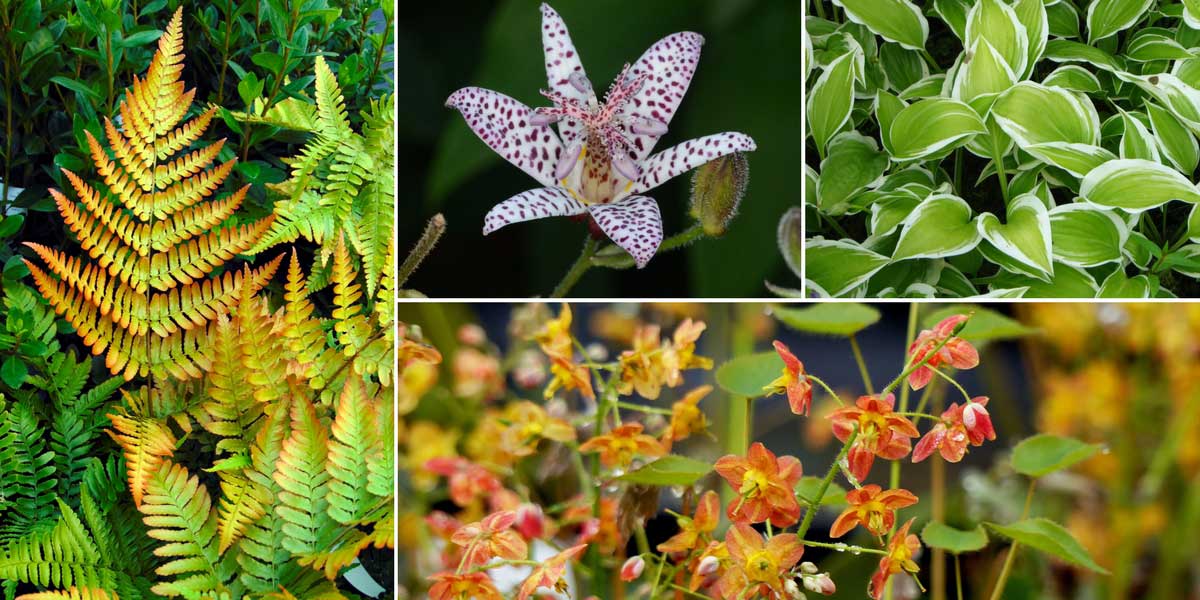

Create a natural woodland atmosphere with Dryopteris erythrosora, Tricyrtis formosana x hirta (photo Amada44), Hosta ‘Emily Dickinson’ and Epimedium warleyense ‘Orangekonigin’
With their elongated fronds, ferns help create a highly graphic garden when paired with horsetails, ornamental grasses or bamboos. This creates a modern-style garden with clean lines and subtle colours. The tallest ferns add strong structure when placed at the back of borders. They create a rather understated backdrop in beautiful green tones that will highlight more vibrant flowering plants positioned in front. Ferns also adapt well to container growing and will bring natural charm when placed on patios.
Discover more inspiring ideas for combining ferns in our advice sheet: “Ferns: 9 Easy-to-Achieve Planting Combinations”
Did you know?
- An incredible diversity
Ferns amaze with their diversity. Some species are resurrection plants: they can dry out completely, appear dead, and revive with the first drop of water. Others are entirely aquatic, floating on water (some can even be found in France). Some are myrmecophilous: they live in symbiosis with ants, providing them with food and shelter! There are also climbing ferns (Lygodium japonicum)! Others, tree ferns, form actual trunks! Unfortunately, these are not very hardy and will need winter protection unless you live in the Mediterranean region.
- A conquering species
The bracken fern, Pteridium aquilinum, is a true conqueror: it easily colonises new areas, to the point of becoming invasive, and resists everything—even fire favours it! It is very difficult to remove once it has invaded an area. And its spores can travel up to 3,000 kilometres! It even prevents other plants from growing.
- Popular beliefs
Ferns are linked to many myths and legends. Their mode of reproduction and lack of flowers have often fascinated and raised questions. They gave rise to the legend of the fern flower. In Eastern European mythology, this very rare flower would grant great powers to whoever finds it. It was also believed that their seeds could make one invisible. They had to be harvested at midnight on the eve of St. John’s Day. It took a long time to understand that ferns do not produce seeds!
- Edible ferns
Some species are edible! This is the case with the fiddleheads of Matteuccia struthiopteris, particularly popular in Quebec. They must be cooked in boiling water or steamed. In Asia, bracken fern is commonly consumed after being prepared to remove its toxicity. Less dangerous, the rhizome of Polypodium vulgare has a liquorice-like taste.
- As mulch!
Some ferns, like Dryopteris filix-mas, are deciduous: their fronds dry out in autumn. Take advantage of this to collect them—they make excellent mulch! Harvest them when dry, cut the larger ones with secateurs, and place them at the base of your plants. They will prevent weeds from growing, keep the soil cool, and, as they decompose, provide organic matter that enriches your soil with potassium! They also have antifungal properties and repel slugs. You can use bracken fronds, which you can find in the wild, in woodland areas with acidic soil. Fern fronds can also provide protection against the cold: place them around your most tender plants, for example, by packing them under winter fleece. You can also make fern manure, effective for repelling insects (aphids, scale insects…), using Dryopteris filix-mas or bracken (Pteridium aquilinum).
Useful resources
- Discover our wide range of ferns as well as all our dedicated care guides
- Find our advice for growing ferns in pots
- Mosses, ferns… the secrets of reproduction in non-flowering plants
- Fernatic, the website for fern enthusiasts
- Our care guide: How to use ferns in the garden?
- Video – Sowing fern spores
- Video – How to repot and divide outdoor ferns
- To learn more, read the book Hardy Ferns for the Garden, by Cédric Basset and Olivier Ezavin, published in 2013 by ULMER editions.
- Plant profile: Maidenhair fern or Adiantum
- Plant profile: Osmunda
- Plant profile: Dryopteris
- Plant profile: Polystichum
- Plant profile: Athyrium
- Plant profile: Blechnum
- Plant profile: Cyrtomium
- Plant profile: Polypodium
- Plant profile: Matteuccia
- Plant profile: Gymnocarpium
- Care guide: Planting tree ferns
- Care guide: Planting ferns
- Video: Evergreen ferns
- Video: The bamboo fern
- Tutorial: How to make fern manure? Recipe and uses
- Care guide: 7 evergreen ferns
- Discover our New ferns for spring 2023 with Alexandra!
Frequently asked questions
-
Should I fertilise my ferns?
In the ground, there's no need. Simply enrich the soil with compost or leaf mould. However, you can add some slow-release fertiliser if you're growing your ferns in pots. Do this in spring, when planting or repotting.
-
My soil is chalky. Can I grow ferns?
Although most ferns prefer slightly acidic soils, some thrive in chalky or limestone-rich ground. This is true for most Asplenium species, including the Hart's Tongue Fern (Asplenium scolopendrium) and certain Dryopteris varieties (such as Dryopteris filix-mas). On the other hand, Blechnum spicant cannot tolerate alkaline soils at all!
-
My garden is dry and sunny. Can I grow ferns?
The most suitable species for this situation is Cheilanthes lanosa. This is a small fern with silvery green foliage. It will thrive in rock gardens and can tolerate both sun and partial shade. It's one of the few ferns that can withstand dry and sunny conditions.
-
Can ferns become invasive in my garden?
No, unless you plant the bracken fern, there is no risk. Occasionally, Onoclea sensibilis, if growing conditions suit it, may tend to spread via its creeping rhizomes. It may need controlling in damp ground.
-
My fern isn't growing!
Check that the growing conditions suit it. The soil may be too compacted or too heavy. Ferns prefer light, rich, humus-rich soils. If you're growing it in a pot, add fertiliser. If it's in the ground and your soil is poor, add compost. It may not be getting enough light, which could slow its growth. Few ferns thrive in deep shade. However, Dryopteris sieboldii naturally has a slow growth rate.
- Subscribe!
- Contents


































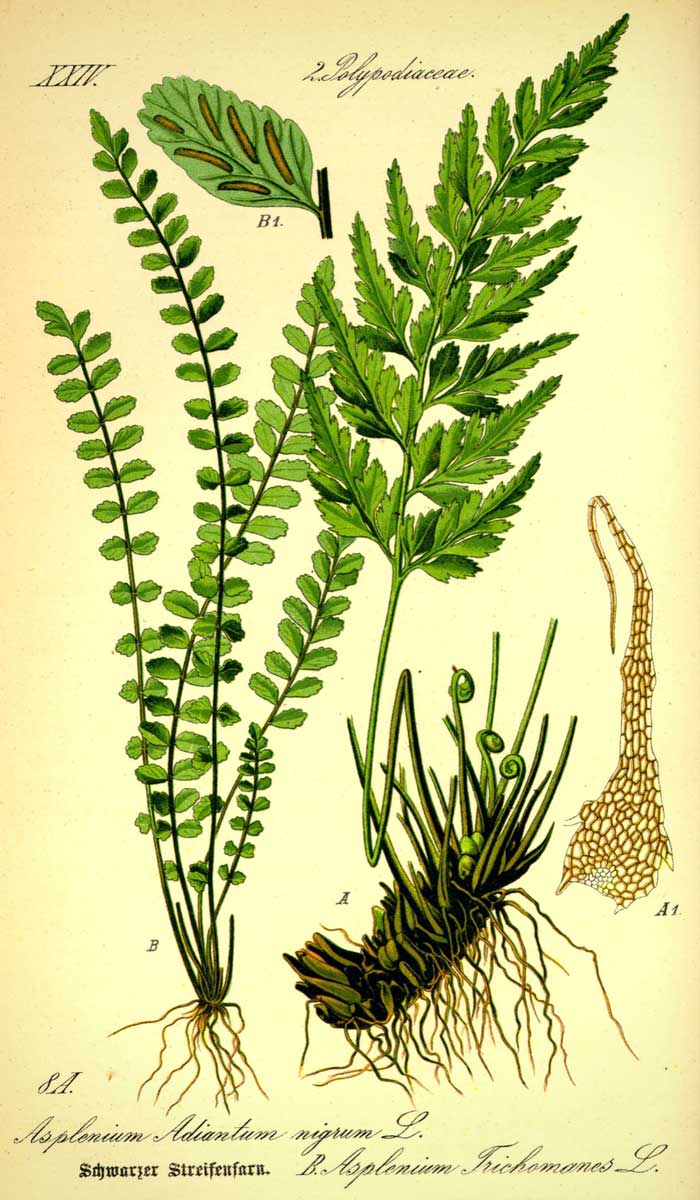
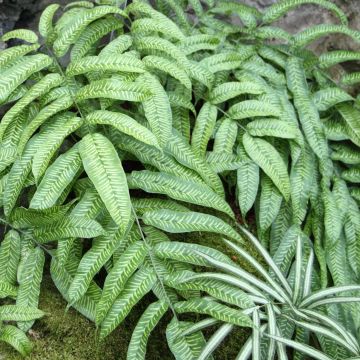
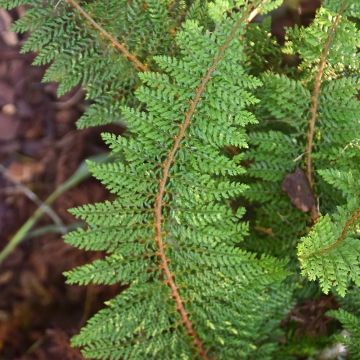

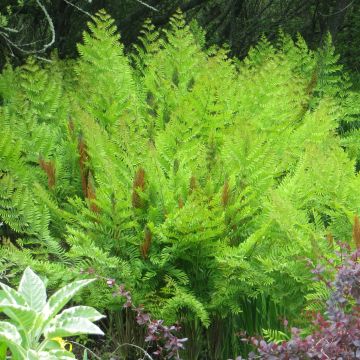



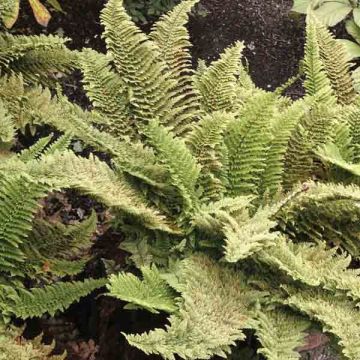
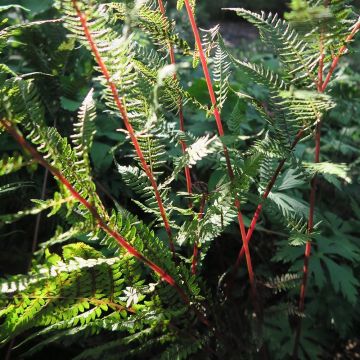
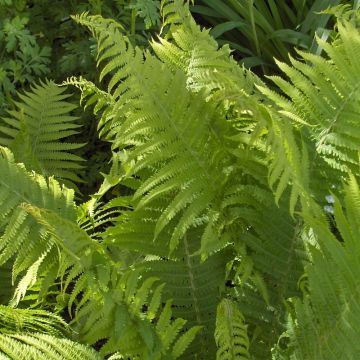
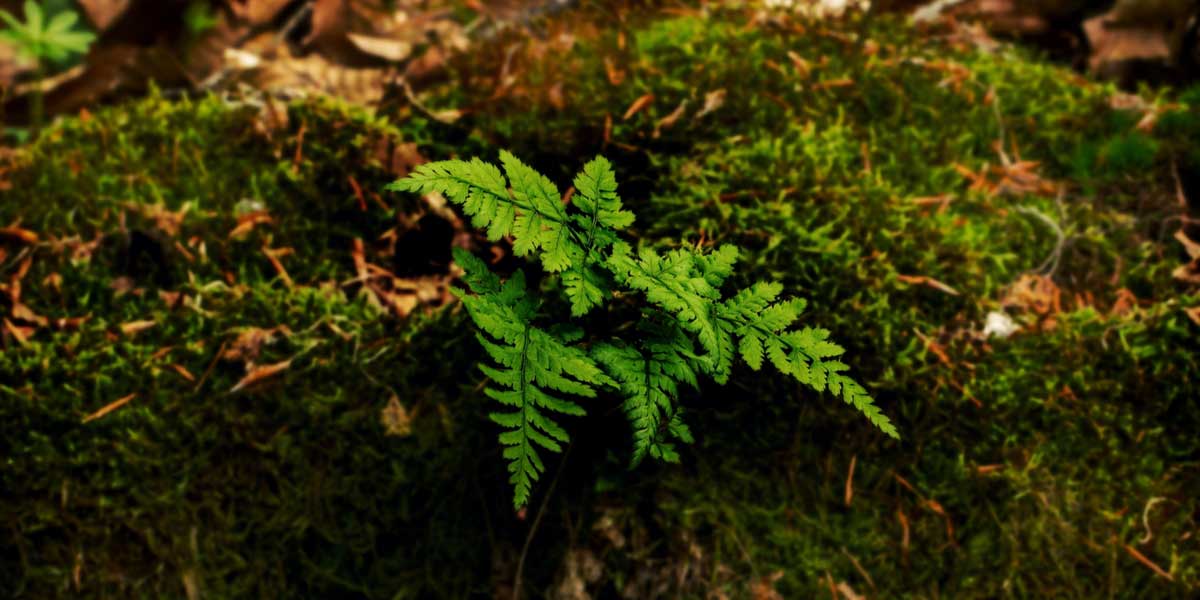
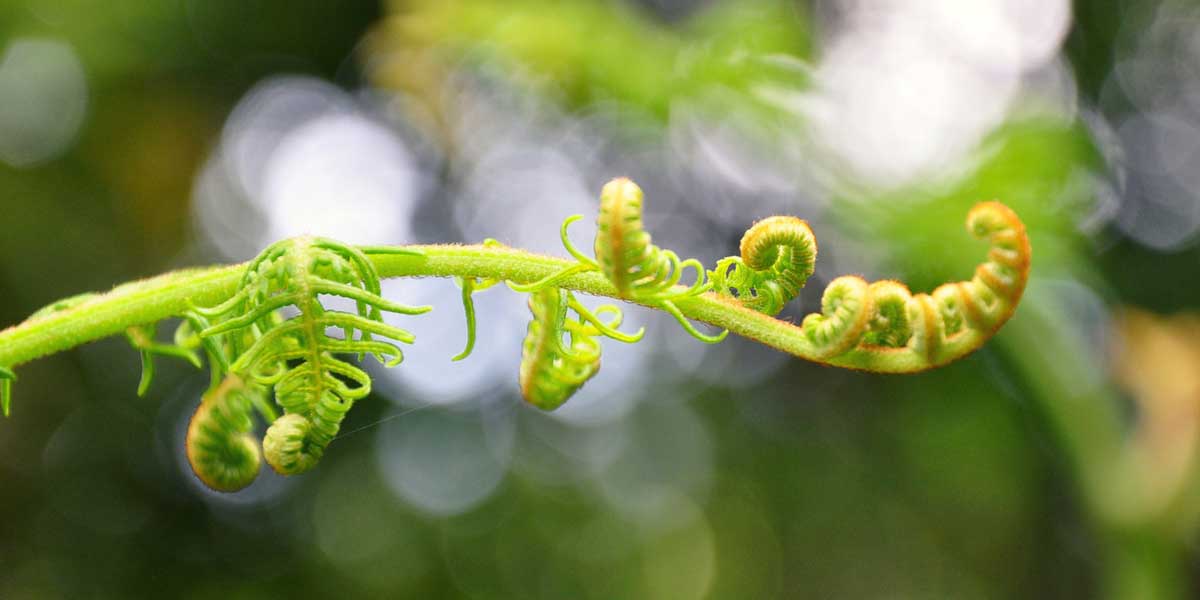
Comments